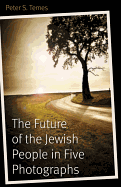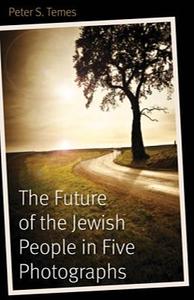
 In the provocative The Future of the Jewish People in Five Photographs, Peter Temes uses a set of images, both iconic and obscure, as touchstones to explore a Jewish future that contains "possibilities hopeful and inspiring but also challenging and troubling." Anyone who wants to learn about the values that have fueled the often improbable story of Jewish survival, and reflect on how those values may advance or impede the continuation of that story, should read this book.
In the provocative The Future of the Jewish People in Five Photographs, Peter Temes uses a set of images, both iconic and obscure, as touchstones to explore a Jewish future that contains "possibilities hopeful and inspiring but also challenging and troubling." Anyone who wants to learn about the values that have fueled the often improbable story of Jewish survival, and reflect on how those values may advance or impede the continuation of that story, should read this book.
Pointing to some seemingly implacable demographic facts--including a low birthrate and an aversion to proselytizing--Temes wonders whether Jews, who today account for only .2% of the world's population, will eventually lose their distinct identity. The first two photographs spotlight the Zoroastrians, whose population, once as high as three million, has shrunk to 200,000, and the Jews of Kaifeng, China, who gradually assimilated into the surrounding population. In the process, Temes notes, these peoples did not become extinct, but instead merely made a "change from one set of ideas to another."
His third photograph, of Reverend Martin Luther King, Jr., and Rabbi Abraham Joshua Heschel marching from Selma to Montgomery in 1965, highlights the tension between Jewish tradition's demand to embrace the cause of social justice and the imperative of self-preservation. "From goodness done by Jews, the best kind of Jewishness follows," Temes concludes, firmly endorsing a Jewish commitment to repair the world. A photograph of Adolph Eichmann, on trial for war crimes in Jerusalem in 1961, anchors reflections on the role of Israel in defining the future of the Jewish people. Here, Temes points out, Jews have assumed the unusual position of a governing power, forcing them to decide "how much to weight survival and strength and how much to weight virtue and reflection."
The final photograph depicts a female rabbi performing the exacting task of repairing a Torah scroll, spurring Temes to consider the importance of traditional Jewish texts and the ongoing conversation in which Jews engage those texts. He concludes by sketching out alternative visions of the Jewish future, from "Theory J," where Judaism eventually disappears into Christianity, to "Theory Five," a fiercely exclusionary effort to cling to the vision of Judaism's uniqueness as expressed in the Five Books of Moses.
Though Temes stops short of offering any bold predictions of his own in this concise, passionately argued book, he provides valuable fodder for many searching conversations about what it will take to carry the Jewish saga forward into the new millennium. --Harvey Freedenberg
Shelf Talker: Five photographs serve as the springboard for a trenchant examination of the Jewish people's future.

